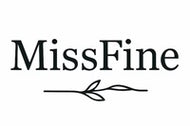If you’re wondering how to measure your bra size correctly, this guide is here to help. All you need is a measuring tape, a mirror, and a notepad. We’ll walk you through measuring your band size and bust size step-by-step, ensuring you find the perfect fit.
Key Takeaways
- Measuring your bra size accurately is essential for comfort and support, reducing issues like back pain and skin irritation.
- Use a flexible tape measure or string to get your band and bust sizes, and remember to adjust your measurements periodically due to hormonal changes.
- Know your sister sizes as a way to find a better fit, and replace bras every 6-12 months to maintain support and structure.
Why Measuring Your Bra Size Matters
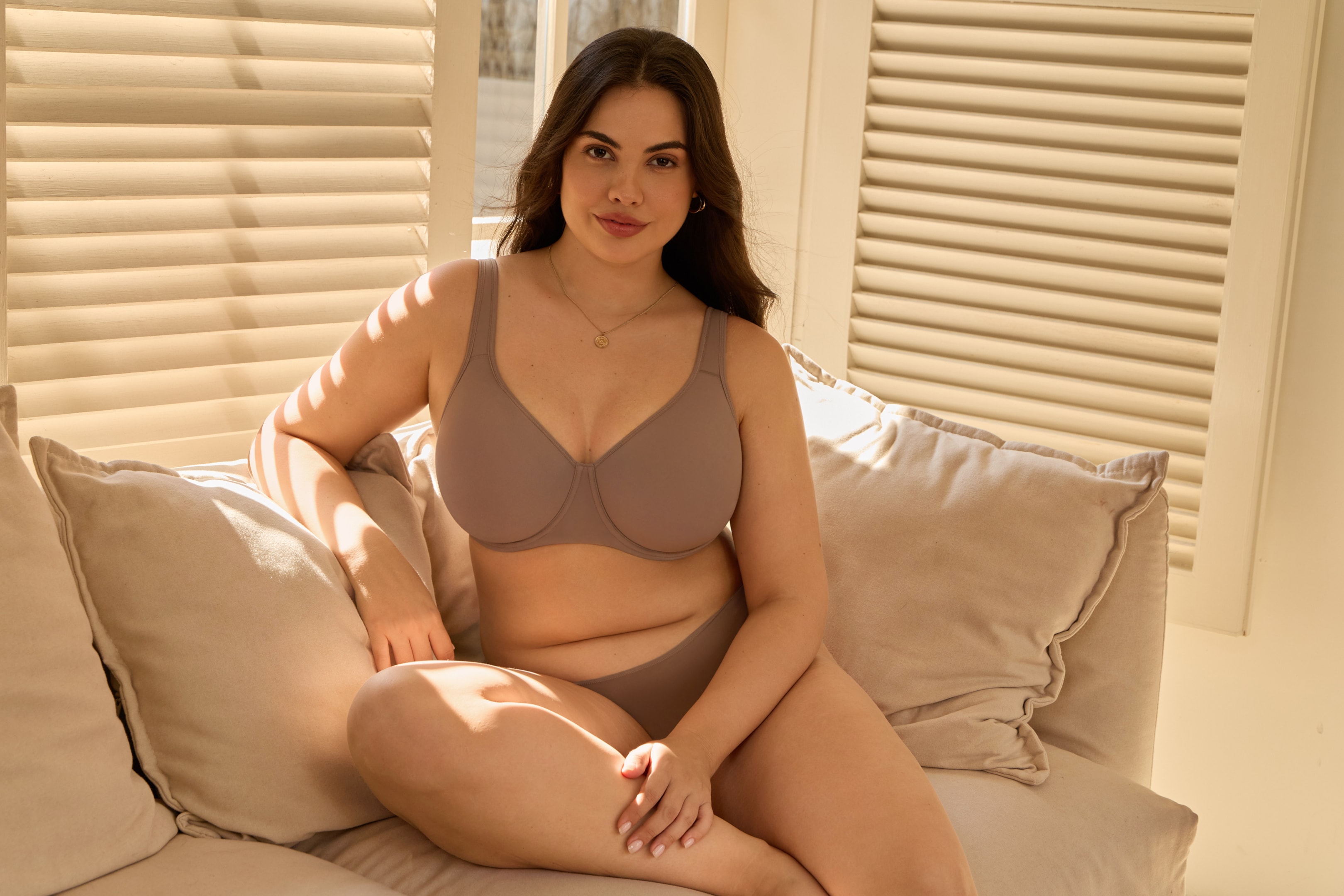
Wearing a well-fitting bra is crucial for comfort and support. It also boosts confidence. The best bra that fits correctly can make all the difference in your daily life by:
- Reducing back pain
- Enhancing your posture
- Supporting your breasts
- Distributing weight evenly, preventing shoulder and back strain.
An ill-fitting bra often causes gapes, slips, and discomfort from digging straps. These issues can lead to constant adjustments and even skin irritation. Moreover, an improperly fitted bra can affect your overall appearance, causing your clothes to fit poorly.
Regular measurements are important because hormonal changes can affect breast size throughout different life stages. This means that the bra size that fit you perfectly a year ago might not be the right one today. Keeping track of your bra size ensures you always have the right fit and maximum comfort.
Tools You Need to Measure Your Bra Size
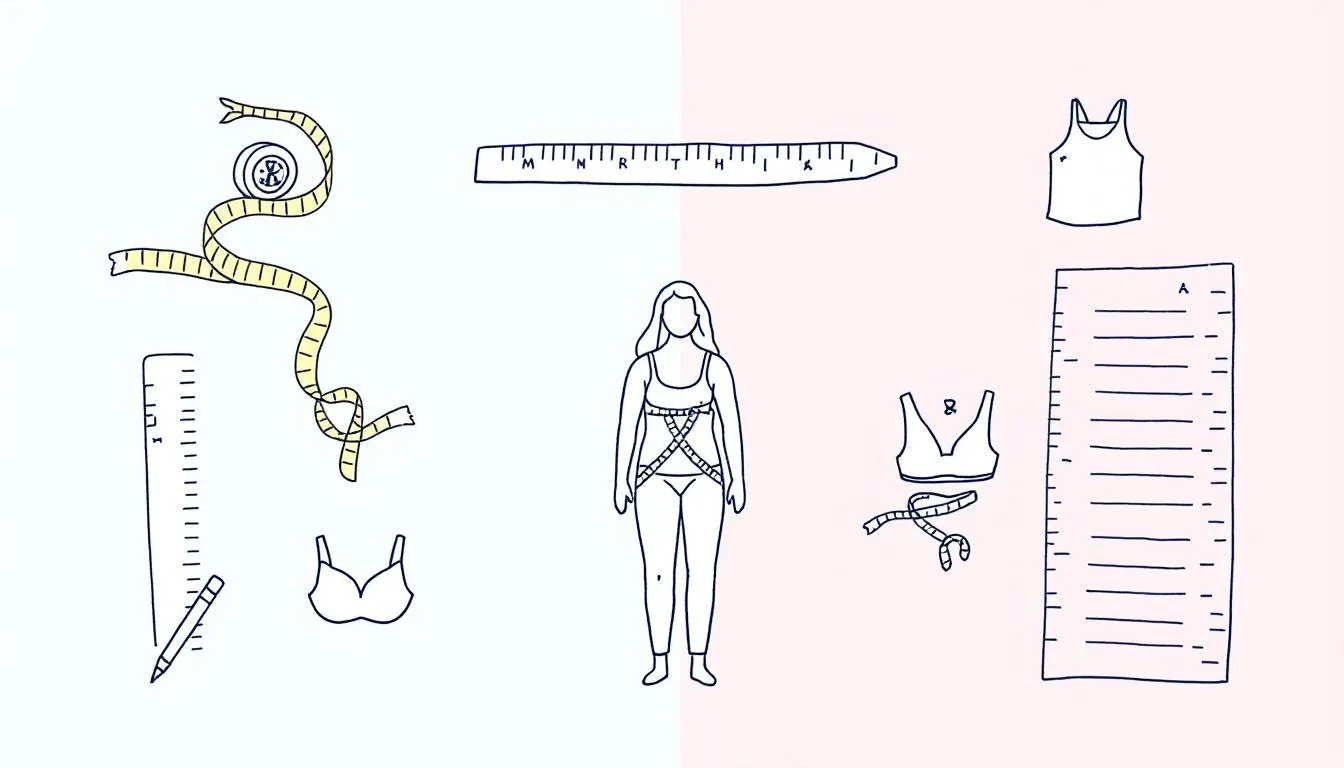
Accurate bra size measurement requires the right tools. A flexible tape measure is key for precise measurements. It allows you to wrap around your body easily without any rigid constraints. A mirror ensures the tape measure stays level, which is especially useful when measuring your band and bust size alone.
Having a notepad to jot down measurements helps keep track of the numbers and avoids repetition. With these tools—a measuring tape, a mirror, and a notepad—you can easily measure your bra size at home.
Step-by-Step Guide to Measuring Your Band Size
The first step to finding your perfect bra is to measure bra size and your band size. Follow these steps:
- Ensure the tape measure is level.
- Wrap the tape measure firmly around your ribcage just below your bust.
- Make sure the tape remains straight and does not sag at the back while measuring.
This guarantees an accurate band size measurement.
If the measurement under your bust results in a decimal, round up to the nearest whole number to determine your band size. Wear a bra during the process for the most accurate measurement. This keeps your breasts in place and provides a more precise band measurement.
The correct band size ensures your bra provides support without being too tight or too loose.
How to Measure Your Bust Size Accurately
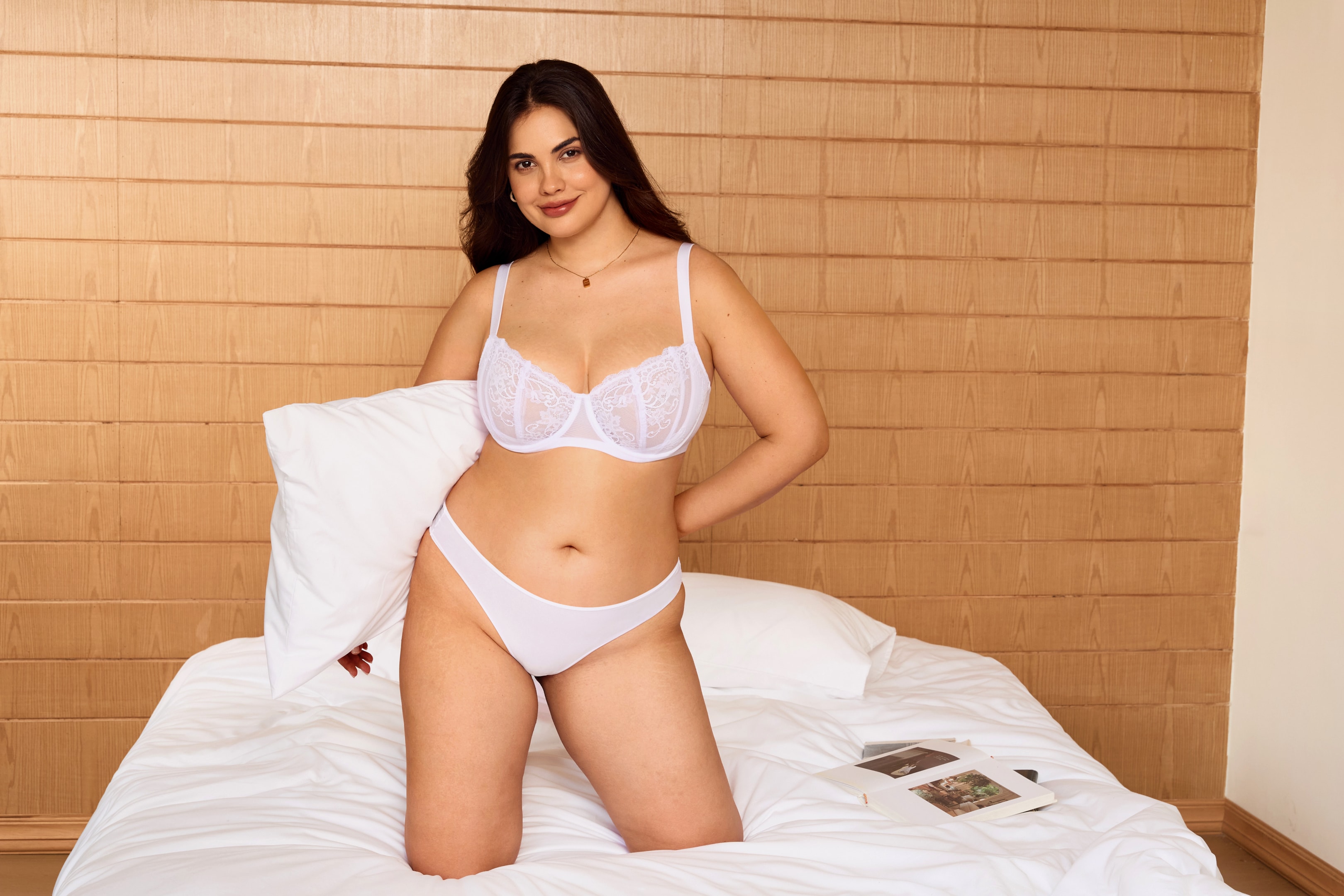
The next step is measuring your bust size:
- Wrap the tape around the fullest part of your bust, usually at the nipple level, ensuring it is level.
- The tape should be snug but not tight against the skin for an accurate bust measurement.
- It should sit comfortably without compressing your breast tissue.
Ensure the tape snugly is level as you measure around the fullest part. This step is crucial for an accurate bust size measurement, directly affecting your cup size. An accurate bust measurement ensures the bra cups fit well without gaping or causing discomfort.
Calculating Your Cup Size
Your bra size is determined by both your band size and cup size, including the band and cup size. To find your cup size using a bra size calculator:
- Take your bust measurement.
- Subtract your band measurement from your bust measurement.
- The difference between these measurements determines your cup size. For example, if your bust measurement is 36 inches and your band size is 34 inches, the 2-inch difference corresponds to a B cup.
Cup sizes are represented by letters corresponding to the difference in inches: A=1 inch, B=2 inches, C=3 inches, etc. Knowing your correct cup size is vital for comfort and support when selecting bras. A well-fitting bra ensures the gaping cups sit flat against your chest without gaps or spillage.
Tips for Measuring Without a Tape Measure
No measuring tape? You can still measure your bra size using a non-stretchy piece of string by following these steps:
- Wrap the string snugly around your ribcage just under your bust to measure your band size.
- Mark the point where the string meets.
- Measure the length of the string with a ruler.
This method provides an accurate band measurement without a tape measure.
Wrap the string around the fullest part of your breasts to measure your bust size, mark the meeting point, then measure this length with a ruler. Ensure the string is level and not too snug. These alternatives can be just as effective in finding your correct bra size.
Understanding Sister Sizes
Sister sizes adjust bra fit by altering both band and cup sizes while maintaining the same cup volume. This is particularly useful if your usual size feels too tight or too loose. For example, if a 34C is too tight, a 36B might be more comfortable, as the band is larger but the cup volume remains the same.
Sister sizes increase your options for finding a comfortable bra fit. To maintain volume, decrease the cup size when moving to a larger band size, and vice versa.
A conversion chart can quickly identify sister sizes based on your regular size. Exploring sister size can make finding the right bra size much easier using a bra size chart.
Choosing the Right Bra for Different Breast Shapes
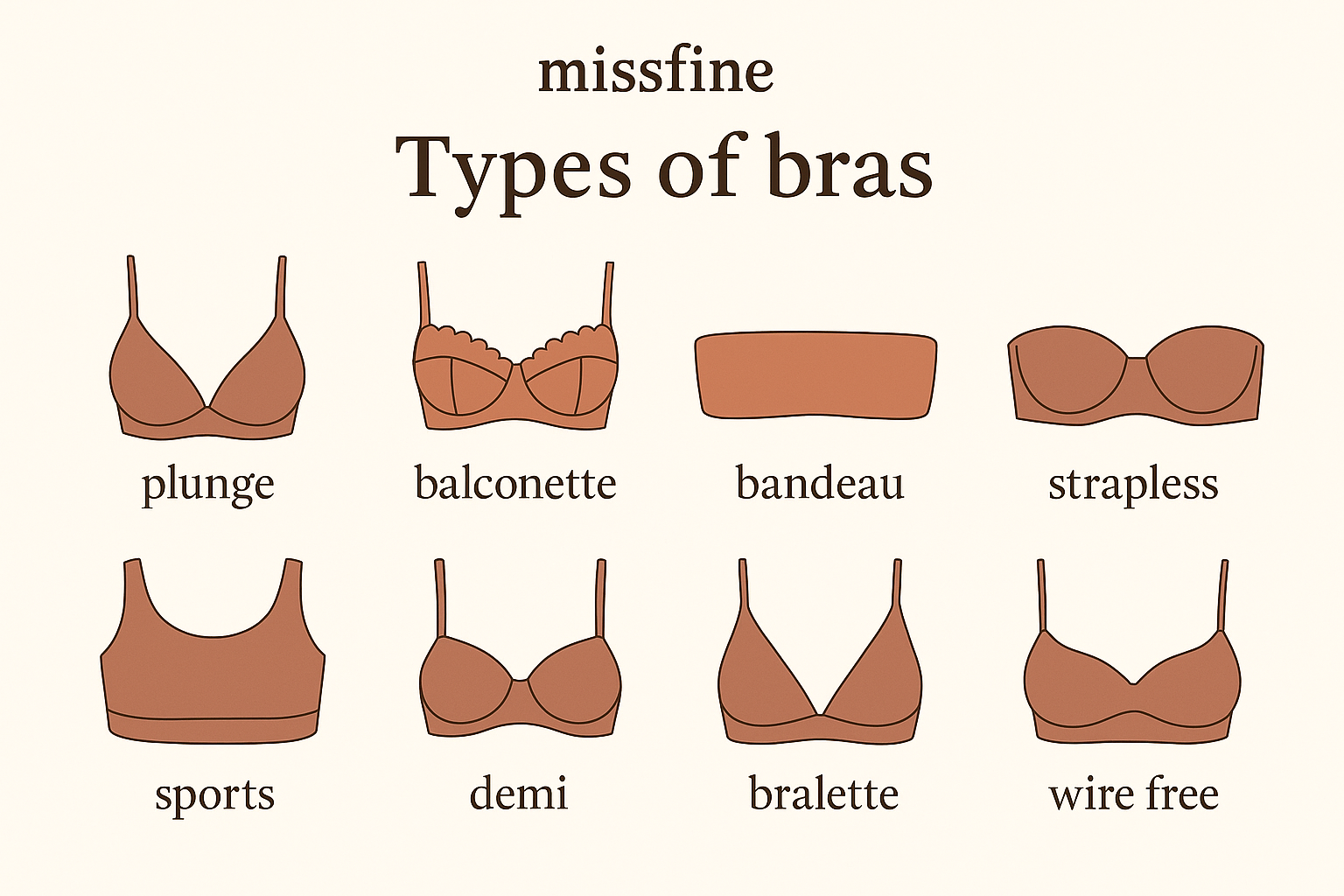
Knowing your breast shape helps in selecting the appropriate bra for support and comfort. Different breast shapes and body shape require various bra styles for the best fit and support.
Asymmetric breasts benefit from bras with stretch fabric or molded cups to accommodate size differences. These different styles balance the appearance and provide a smooth silhouette, ensuring that the bra fits well through proper bra fitting.
Athletic breast shapes can consider plunge bras or push-up bras for a better fit. These bras enhance shape and offer extra lift.
Pendulous breasts need bras with strong support, wide bands, and full support cups. These features lift and prevent sagging.
Bell-shaped breasts work well with balcony and half-cup bras for proper support. These styles lift the breasts and create a flattering shape.
For East West shapes, full cup bras with stretch fabric or plunge styles bring the breasts closer together. This creates a more centered appearance.
Side set breasts benefit from balcony bras with vertical seams for better shaping. These bras provide extra support and enhance the natural shape while ensuring bra’s support.
Round breasts can opt for full cups or minimizers for a more streamlined appearance. These t shirt bras help achieve a smooth silhouette and reduce bulk. The best bras provide the support needed for a comfortable fit, making a classic everyday bra an essential choice.
How Often Should You Measure Your Bra Size?
Around 92% of women do not measure their bra size as often as recommended, leading to discomfort. Experts suggest replacing bras approximately every six months or after about 180 uses. This ensures bras maintain their shape and support.
Measure your bra size every 6 to 12 months. Also, measure whenever there are changes in fit. Regular measurements ensure a proper fit, crucial for comfort and support. Keeping track of your bra size helps maintain the right fit and avoid discomfort.
Signs It's Time to Replace Your Bra

Wearing the wrong bra size can contribute to several health issues, including:
- Musculoskeletal pain, such as problems in the back, shoulders, and neck pain
- Skin irritation and rashes
- Digestive issues like acid reflux
- Breathing difficulties caused by a tight bra band, especially for those with existing chest conditions
Signs that indicate a bra should be replaced include:
- A stretched-out back band that feels loose even on the tightest hook.
- Constantly adjusting straps slide.
- Bra fabric showing signs of breaking down or losing its stretch.
- Visible elastic threads fraying from the bra, indicating damaged elastic.
Proper Care for Your Bras
Garment care labels suggest:
- Machine wash bras on delicate.
- Using a mesh lingerie bag during machine washing to protect bras from damage.
- Avoiding fabric softeners as they can deteriorate the elastic fibers in bras.
To maintain their shape, bras should be dried to lie flat. Do not tumble dry, iron, twist, wring, use clothes pegs, or dry on a radiator. Reshape bras after washing to help them retain their form.
Storing bras stacked in a drawer, rather than folded, prevents cup damage.
Summary
Recapping the key points from this guide, measuring your bra size accurately is essential for finding the perfect fit. By using the right tools and following the steps outlined, you can ensure that your bras provide the support and comfort you need. Regular measurements and understanding sister sizes can make a significant difference in your bra-wearing experience.
Remember, a well-fitting bra not only enhances your appearance but also boosts your confidence. Embrace the journey to finding your perfect bra size and enjoy the comfort and support it brings.
Frequently Asked Questions
How do I calculate my correct bra size?
To calculate your correct bra size, measure your ribcage snugly under your breasts and then add 3 inches to that number for your band size. If the result is odd, round up to the next band size.
How do I measure my bra size at home?
To measure your bra size at home, take a flexible measuring tape and measure your band size snugly around your ribcage. Then measure your bust size at the fullest part. Subtract your band size from your bust size to determine your cup size.
How often should I measure my bra size?
You should measure your bra size every 6 to 12 months, or anytime you feel your fit or comfort has changed. Keeping an eye on it ensures you always wear what's best for you!
What are sister sizes and why are they important?
Sister sizes are alternative bra sizes that maintain the same cup volume but differ in band size, making them important for finding a better fit when your usual size doesn’t feel right. So, if your bra is too tight or loose, checking out your sister sizes could really help you feel more comfortable!
How can I care for my bras to make them last longer?
To make your bras last longer, wash them on a delicate cycle in a mesh lingerie bag, skip the fabric softeners, and always dry them flat. Taking these steps will help keep their shape and elasticity intact!
